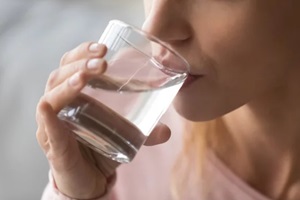 When you think of Hawaii, gracious hospitality, usually captured in the aloha spirit, is one of the first things that comes to mind. Clean, safe drinking water has much to do with this warm welcome.
When you think of Hawaii, gracious hospitality, usually captured in the aloha spirit, is one of the first things that comes to mind. Clean, safe drinking water has much to do with this warm welcome.
Hawaii’s tap water may not be the best in the country. Still, developments in water filtration technology have allowed residents to access water that meets the highest quality standards.
Below is a detailed discussion of the importance of water filtration in Hawaii and the science behind it.
What Hawaiians Need To Know About Water Filtration
At its basic level, water filtration removes impurities and contaminants from water to make it safe for human consumption. These pollutants are often classified into three:
- Physical pollutants include sediments, debris, and other particles suspended in water.
- Biological contaminants include bacteria, viruses, and protozoa.
- Chemical pollutants result from natural, human, and industrial processes. These include organic compounds, solvents, pesticides, pharmaceuticals, and heavy metals.
Scientific Principles Behind Water Filtration
Most modern filtration systems use physical and chemical processes to remove contaminants from drinking water. Physical processes trap physical pollutants. Chemical processes transform pollutants into less harmful substances, replace them, or remove them altogether. The latter may also bind chemicals together for easy removal.
Below are physical and chemical processes described in detail:
- Sedimentation: This step allows suspended particles to settle at the bottom of a tank using gravity.
- Coagulation and flocculation: Chemicals such as ferric chloride and aluminum sulfate are added to water to create tiny particles that bind with impurities in the water.
- Membrane filtration: This principle is mainly used in reverse osmosis. Water passes through semi-permeable membranes with different pore sizes, which allow water molecules to pass through and retain contaminants.
- Adsorption: Organic compounds and some chemicals can be removed by adsorption on activated carbon. These pollutants adhere to the surface of the activated carbon.
- Ion exchange: This process replaces the ions of heavy metals, including lead and mercury, with those of harmless ions, such as sodium and potassium.
Water Filtration Techniques and Technologies
Traditionally, boiling and chlorination were the primary methods of purifying drinking water. On the other hand, modern systems incorporate complex techniques that employ the above principles to guarantee quality drinking water in Hawaii. These include:
 Granular Activated Carbon (GAC) Filtration: This method uses activated carbon to adsorb dissolved organic compounds, volatile organic compounds, chlorine, and more.
Granular Activated Carbon (GAC) Filtration: This method uses activated carbon to adsorb dissolved organic compounds, volatile organic compounds, chlorine, and more.- Ultraviolet (UV) Disinfection: UV light passes through water to kill bacteria and other pathogens.
- Reverse Osmosis: This technique uses semi-permeable membranes of pore size as small as 0.0001 microns to remove almost all contaminants, including protozoa, bacteria, and viruses.
- Ozone Treatment: Ozone is an oxidizing agent to remove bacteria and viruses. It also helps in removing color, taste, and odor from water.
Environmental Impact of Water Filtration in Hawaii
Besides providing clean, safe drinking water, modern filtration systems in Hawaii contribute to environmental conservation. They reduce dependence on the plastics used in bottled water, subsequently reducing the amount of plastic waste in landfills, which takes years to decompose.
Another significant contribution to the ecosystem is reducing carbon emissions due to the decreased manufacture and transportation of plastic bottles.
Challenges of Water Filtration in Hawaii
Water filtration in Hawaii is usually hampered by various factors, including:
Unique Water Quality Issues in Hawaii
Hawaii’s tap water has high levels of contaminants that require customized filtration techniques. These include:
- Nitrates from agricultural runoff
- Microbial from the wastewater treatment
- Arsenic from volcanic activity and rocks
- Saltwater intrusion
High Cost of Energy
Hawaii has the highest energy rate in the country due to its geographical isolation. This means oil must be imported from the mainland U.S. to power its generators, a cost passed on to water users.
Balancing Efficiency With Sustainability
Hawaii’s unique water quality concerns call for advanced and efficient water filtration systems, which entail high initial, running, and maintenance costs. Striking a balance between efficiency and sustainability is usually a challenge.
The Future of Water Filtration in Hawaii
 Hawaii’s water filtration systems meet and exceed the EPA’s highest quality standards. Reliable water filtration systems providers in Hawaii also offer additional features such as pH and alkaline boosters, natural coconut finishers, and ozone oxygen injectors.
Hawaii’s water filtration systems meet and exceed the EPA’s highest quality standards. Reliable water filtration systems providers in Hawaii also offer additional features such as pH and alkaline boosters, natural coconut finishers, and ozone oxygen injectors.
However, there is always room for improvement, and this will likely be the case in the future. For example, continued research and development could and is expected to keep pace with emerging contaminants, new demands from environmental and energy regulations, and technological innovations.
Get Clear Filtered Water At Home With Hawaiian Cool Water
Hawaiian Cool Water helps Hawaii residents purify their drinking water and conserve the environment. Its state-of-the-art water filtration and softening systems also enhance the taste and smell of drinking water using ozone oxygen injectors, pH and alkaline boosters, and natural coconut finishers.
Contact Hawaiian Cool Water today for efficient water filtration systems in Hawaii.


